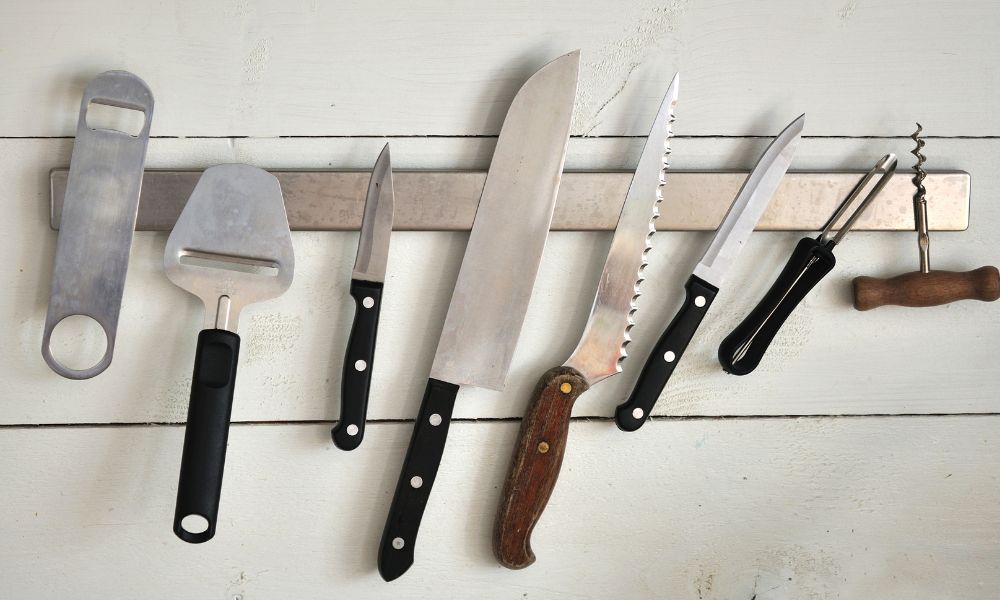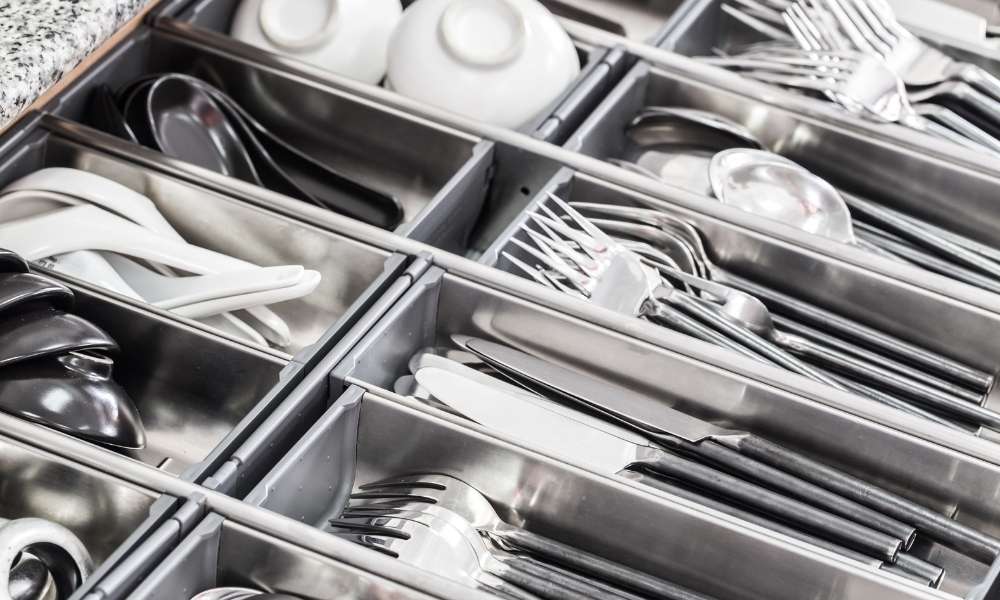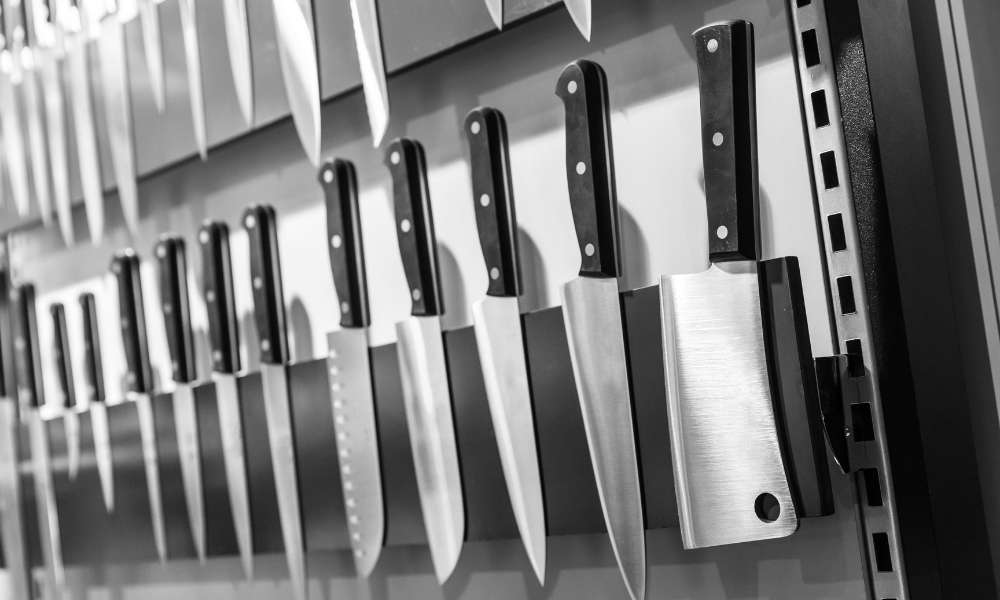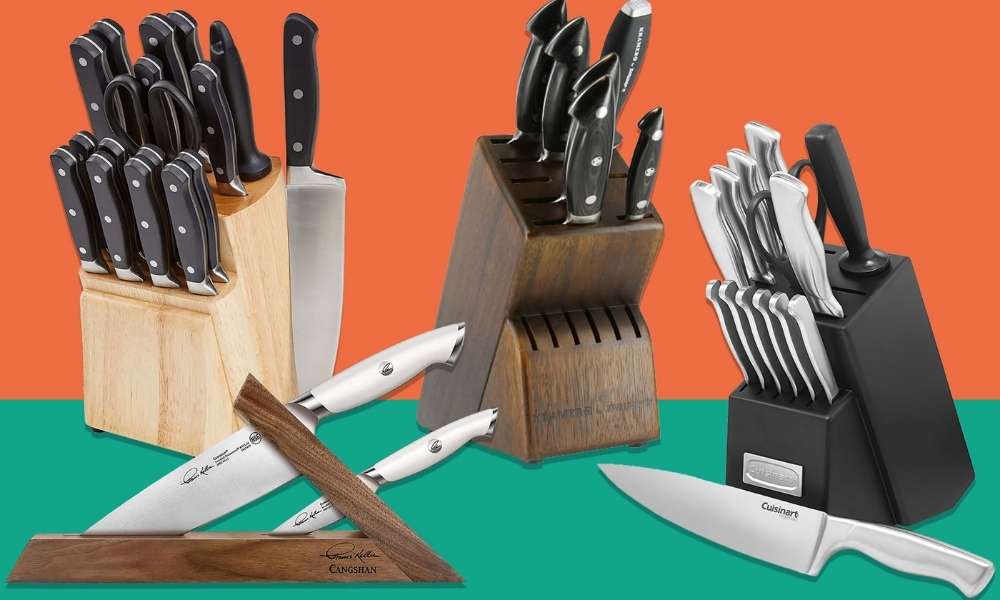There are many different types of knives that you can use to create a multitude of dishes, but it’s important to choose the right type of knife for your needs. The best kitchen swords combine sharpness, ease of handling, and affordability. Here are some tips on how to choose the right knife for your kitchen. How to Choose Kitchen Cutlery
Using a knife is easier if you have short nails or gloves and if you keep your hands away from the blade while cutting. Try to avoid using a serrated knife because they have a greater risk of slipping while cutting and having an accident with the blade.
What are Kitchen Knives and Why do you Need Them?

Kitchen knives are a vital tool to have in your kitchen. They are used for chopping, dicing, and slicing foods. They can also be used as a skewer to cook meat.
Kitchen knives come in many shapes and sizes based on their use:
-Chef’s cutter has a long blade and is good for cutting through tough meats and vegetables.
-The paring cutter has a short blade that is perfect for fruit peeling or small herbs.
-Utility Knife is the most versatile knife because it can cut multiple types of food without having to switch out different swords.
-Cleaver is a heavy-duty cutter that has quickly become popular because of its efficiency at chopping bones, joints, and other large pieces of meat.
Types of Kitchen Cutlery

There are multiple types of swords, including those made from stainless steel, carbon steel, ceramic, and more.
Butterfly Knives: Butterfly knives are available in a variety of styles with straight or serrated blades. They have a rounded tip that makes them easy to hold and they are specially designed for cutting meat.
Utility Knives: Utility swords are similar to butterfly cutters but they have a blade that is dull on one side. The dull side is typically used for slicing vegetables or fruits while the sharp side is used for cutting meat.
Sabatier Knives: Sabatier knives are also known as chef’s knives and they have blades designed specifically for chopping food. They’re often found in kitchens because they’re the best tool for making julienne cuts with ease.
Chef’s Knife: Chef’s knives are a type of Sabatier sickle with a blade between 7-12 inches long and a narrow point at one end that can be used to puncture and lift food from a cutting board. They’re also an excellent choice for cutting small items like herbs and garlic cloves into thin strips without breaking them apart first.
Paring Knife: Paring swords are smaller than chef’s cutters and
Which knives are best for specific tasks?

The best knives for chopping vegetables are those with a straight edge and the blade is in the center of the knife. This type of sickle is easy to use, holds its position well, and allows you to precisely chop your vegetables. When dealing with tough vegetables, like potatoes and carrots, these swords allow you to cut without having to apply a lot of force.
One-handed cutters are great for slicing bread or other foods that require precision in just one hand. If you’re making food that requires both hands for a task, then this type of dagger may not be suitable for you.
Serrated swords are good for cutting bread or other foods with a soft surface but not so much on harder surfaces like bones or fruits. Serrated blades have small teeth on the blade that can help slice through food more easily and quickly than other types of blades. Another benefit of serrated blades is they reduce slipping while cutting due to their texture.
Straight-edged pen knife are good choices when cutting vegetables that need a lot of pressure applied, such as bone-in chicken pieces and whole fish fillets. For hard vegetables
What is a good value for your money?

When choosing a knife, it’s important to consider what you’re getting for your money. Don’t be afraid to get a less expensive dagger with certain features that are important to you. You can always invest in a higher-quality knife later on when you have more money.
While it might seem like the most convenient option would be to get a chef’s sickle, they aren’t always the best choice for someone who doesn’t want to spend a lot of time learning how to use them. Another pen knife might be better suited for people who are new to cooking or experienced chefs who don’t want anything too complicated.
Another thing to consider is whether or not your kitchen will feel more at home with one type of knife or another. If you live in an apartment and don’t have much space, you might want a smaller, more compact dagger that won’t take up too much room on your countertop. It also makes sense to choose pen knives based on their size and weight if space is tight in your kitchen and you need something light so it doesn’t take up too much space when storing it away.
Choosing a Knife For Your Kitchen

Knives come in a wide variety of shapes, sizes, and materials. The material will determine the knife’s sharpness and durability.
The handle should fit your hand comfortably. If you need to lift the sword and carry it over your shoulder, the handle needs to be large enough for the blade to rest on the top of your shoulder.
If you have a small kitchen, consider a folding dagger because they are more compact and easier to store than an all-around-sized chef’s knife.
What to look for in a kitchen knife

When you’re looking for the right kitchen dagger, these are some of the things to consider:
-How sharp is the blade?
-Does it have a serrated edge?
-What kind of handle does it have?
-How well does it hold an edge?
Sharpness. The quality and sharpness of a kitchen knife’s blade will determine how easy or difficult it is to cut through food. Replace dull pen knives with new ones as soon as they lose their edge. Serrated edges. A serrated edge can help in certain circumstances while cutting bread. But they also have a greater risk of slipping when slicing other types of foods. Handle.
Hardwood handles are more durable than plastic handles, so opt for hardwood if you can afford them. Size. Make sure that the knife fits your hand comfortably and that you feel confident in its use before buying one. Material. If you can afford a high-quality Damascus steel dagger, go for it! It will be worth the price over time due to its durability and sharpness over time. Edge retention. How long will your blade stay sharp? See what others say about company warranties on Amazon or
How to use a knife

It’s easy to use a sword if you know the right steps. Here are some tips to help you, get started:
– Before using a knife, make sure that it’s sharpened.
– If you’re using a serrated skewer, make sure that the blade is not slippery and is at least four inches from the fingers.
– Hold the dagger with your thumb on top of the handle so that your fingers are wrapped around the bottom part of the handle, closer to where your hand meets your wrist. This allows for more control and less risk of cutting yourself.
– Make sure to hold the skewer firmly with two hands so that you can control how much pressure you need to apply when cutting. It’s better if you have one hand holding down on each side of the blade, with your fingers gripping tightly around where they meet near the middle of the blade
Types of Knives

Knives are one of the most popular tools in every kitchen. They come in all shapes, sizes, and materials. Can be used for both food preparation and cooking. The two most common types of knives in a kitchen are chef’s knives and paring knives.
Chef’s knives typically have a long blade that in usually serrated on one side. To make it easier to cut through foods like bread, fruits, or vegetables. A chef’s skewer also has a straight edge on the other side for more delicate tasks. Such as peeling fruits or mincing herbs. Chef’s knives vary greatly in size based on their purpose and intended use Choose Kitchen Cutlery.
Paring knives are smaller versions of chef’s knives with shorter ones. Blades on also typically serrated on one side. To make it easier to cut through foods like bread, fruits, or vegetables.
There are many other types of common household items. They can have used as kitchen skewers such as ice cream. Scoops or vegetable peelers if you don’t want to buy a full set of specialized kitchen tools like chef’s and paring knives Choose Kitchen Cutlery.
Conclusion
There is no shortage of kitchen knives on the market. It is important to know what options are available before choosing what skewer is best for your kitchen.
There are many different types of knives. Each type has its own specific use. Whether you are cooking, cutting, or chopping, you need the right skewer for the job Choose Kitchen Cutlery.
To find the right knife, consider a few different factors: type of project, and your hand size. How often you use the knife and how often you clean it. For example, if you will only be using your kitchen sword a few times a month. Then a more lightweight sword may be perfect Choose Kitchen Cutlery.
Once you have determined which sword is best for your kitchen. Choose from a wide range of designs to find the one that best suits your personality.





